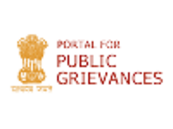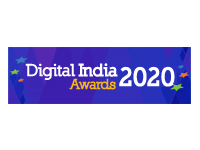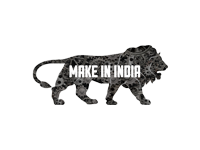3.1.1 A detailed study and discussions with various industrial units has resulted in identifying technologies, which are suitable for technology transfer. The manufacturing sector in Tamil Nadu and Kerala are amongst the most developed in India and consequently can be a good source of technologies to the developing world.
3.1.2 The technologies, turnkey projects and systems identified for technology transfer are as follows:
| Agro & Food | 1. Herbal & Spice Extract 2. Grounded Spices 3. Spice Powder (Masala) & Ayurvedic Diabetic Food Supplements 4. Ready to Eat Frozen Foods 5. Sugar Production |
|
Automotive Components |
6. Computerized Automobile Service Station Equipment 7. Automobile Instrument Cluster (Speedometer) 8. Industrial Air Compressors & Hydraulic Lift 9. Air Braking Systems for Commercial Vehicles |
| Ayurveda | 10. Ayurvedic Pharmaceuticals & Nutraceuticals For Blood Pressure, Piles & Diabetes 11. Ayurvedic Tablets & Capsules For Liver Disorders 12. Personal Care & Ayurvedic Based Pharmaceutical Products |
| Biotechnology & Medical Equipments | 13. Bulk Drugs Manufacturing viz. Beta Carotene, Lycopene, Phycocyanin 14. Retractable Safety Scalpel 15. PVC Blood Bags 16. Plant Tissue Culture Based Micropropogation |
| Coir | 17. Natural Agri & Coir Fibre Products 18. Mat & Mattings |
| Electronics | 19. Ceramic Capacitors 20. Electronic Training Equipments |
| Engineering | 21. Aluminium Heat Exchangers 22. Embedded Motor Control Technology 23. Air Compressors 24. Fly Ash Brick Manufacturing Plant 25."High Density" Concrete Block Manufacturing Facility 26. Centrifugal & Submersible Pumps 27. Centrifugally Casted Liners 28. Wire Ropes 29. Coffee Processing Plant 30. Welding Torches, Electrodes and Accessories 31. Cereal Processing Machines 32. Industrical/ Domestic Cleaning Equipments 33. Mini-Steel Plant employing Electric Arc Furnaces & Continuous Casting Machine 34. Valve Body Forgings |
| Garment Manufacturing | 35. Knitted & Woven Garments 36. Knitted & Woven Garments 37. Knitted & Woven Garments 38. Knitted & Woven Garments 39. Knitted Fabric for Inner Wear< 40. Knitted Fabric & T-Shirts 41. Cotton & Blended Garments 42. Hoisery Garments |
| Leather | 43. Finished Goat Leather Manufacturing For Footwear And Leather Goods Industries. 44. Haemostatic wound healing sheet Manufacturing 45. Buffalo Automotive Upholstery Leather Manufacturing 46. Formaldehyde free polymeric syntan Manufacturing 47. Chemo Autotrophic Activated Carbon (CAACO) System for Waste water treatment 48. Reconstituted Collagen sheet (RCS)Manufacturing 49. Manufacturing Parchment like material |
| Paints & Chemicals | 50. Building & Vehicle Finishing Paints 51. Caustic Soda |
| Rubber | 52. Tyre Retreading Material 53. Prepowdered & Powderfree Medical Gloves 54. Latex Products eg. TSR,Gloves 55. Medical Gloves 56. Micro Cellular Rubber Sheets for Diabetic & Orthopedics Patient 57. Slippers & Mats 58. General Purpose Latex Gloves 59. Surgical & Examination Gloves |
| Textile Machinery | 60. Industrial Automation System for Textile Mills 61. Ring Doubling & Twisting Machines 62. Packing & Braiding Machines 63. Auto Leveler Draw Frame(Textile Machine) 64. Textile Travelling Cleaner 65. Textile Testing Equipments for Strength Testing andTrash analysis 66. Top Rollers 67. Textile Testing Equipments for Sample Conditioning and Yarn Examination |
|
Miscellaneous |
68. Nylon Mono Filament Fishing Lines 69. Holograms Production 70. Paper Production Machinery 71. FRP House Boats 72. Paper Manufacturing |
The turnover of the companies offering technologies/projects range from USD 0.06 Mn to USD 120 Mn. The technologies/projects offered range from USD 0.013 Mn to USD 26 Mn.The cumulative value of projects offered is USD 150 Mn.
3.1.3 The technologies are proven and commercialized in India. The unique strengths of Indian system which makes the technology exports feasible are:
Low capital investment
Focus on labour intensive low cost operations
Superior indigenous engineering skills
3.1.4 The traditional exporters of technologies are from developed countries where the focus is continuously on higher levels of automation, large scale operations and high capital costs. These factors lead to "unsuitability" of such technologies for developing countries. The SMEs from Tamil Nadu and Kerala are well suited to cater to such technological requirements of developing countries in diverse sectors such as engineering, pharmaceuticals, textiles and traditional system of medicine.
3.1.5 In the extensive survey carried out, it was noted that most Small and Medium Scale organizations are focused on exporting products and services. The focus on technology exports is limited at best. While a large number of organizations have gained critical know-how for developing new products, the ability to transform it in the form of IP or exportable technology package is very limited. The limited focus on technology exports is due to following factors:
Pre-dominant practice of importing technology and modifying it to suit Indian requirements leading to lack of R&D focus
Focus on developed countries as export markets where competitive advantage lies in exporting products and services
There is an impending requirement of educating the SSI managers about the potential for exporting turnkey projects/ development of indigenous R&D and the benefits of exporting technologies.
3.1.6 Creating a few success stories and communicating the benefits to larger community would also help in building the momentum for technology exports from India.
3.1.7 There is a need to extensively promote the profiled technologies and organizations in the developing countries. Following are the suggested mechanisms of promotion:
Hosting the technologies in technology exchange internet platforms (E.g. www.yet2.com)
Participation in technology fairs / exhibitions for interaction with potential customers
Distribute the project profiles among the prospective entrepreneurs through Chambers of Commerce, Financial Institutions and industry Associations
3.1.8 A well-defined program needs to be developed for target countries which should include interaction with the entrepreneurs to identify the needs. Any selling should be customer focused and the technology needs to be customized for specific customer/ country requirement. This can be achieved by working in public-private partnership where DSIR works with consultants to promote Indian technologies in focused countries





















